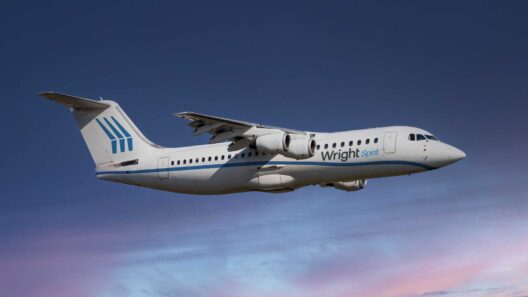Jeffrey Engler has headed up Wright Electric for the last decade, working to provide efficient motors, inverters and overall power systems for airliners. Now, his firm is working to develop those airliners. From a startup in 2016, looking for a single-engine light aircraft to convert to hybrid power, Jeffrey has grown Wright to a recognized force in future flight. Presenting a mission statement and schedule for the next eight years, Wright has ambitious, but reasonable plans.
Currently, Wright is testing a two megawatt motor and inverter, “Collaborating with NASA, U.S. Department of Energy, and U.S. Department of Defense.” Testing will continue through 2023.
The firm predicts it will be flying its Wright Spirit between the busiest “city-pairs” in the world by 2026. The Spirit, a BAe 146 converted to electric power, will connect paired destination such as, “Seoul-Jeju, London-Paris, Rio de Janeiro-São Paulo, and San Francisco-Los Angeles.” “Wright’s goal is to make all single-aisle flights shorter than 800 miles zero-emissions,” with their web site noting 45-percent of all aviation emissions are from single-aisle flights (of intermediate range).
Distributing the Power
Wright’s first concept for hauling large numbers of people was a 186-passenger airliner, significantly bigger than the nine- or 19-passenger aspirations of other future-oriented developers in 2020. Intending to build a, “1.5 MW electric motor and inverter at 3 kilovolts,” Wright worked with BAe Aerospace toward their goal. They have since achieved a 2 MW motor and inverter, enough to give their craft significant climb capabilities.
Their 100-passenger craft, based on the BAe 146, maxes out at 426 knots or 789 kilometers per hour (490 mph), and cruises at Mach 0.7 (404 knots; 747 kilometers per hour, 464 mph). Wright pegs this airplane as flying one hour on battery power, but the FAA will doubtless expect an energy reserve that will guarantee the ability to stay in a pattern or make a go-around.
If the plane can live up to its mission, over 300 BAe 146’s exist for conversion, or a new design variation on the larger airliner design might enable longer flights with more passengers. By 2030, the Wright 1 could be, “the first zero-emissions airplane for everyday use, at a price comparable to fossil-fueled alternatives.”
Wright’s White Paper
The “Wright Spirit Energy Storage Discussion Paper” outlines the firm’s approach to choosing from the many possibilities for moving forward. Their preliminary draft compares the differences between hydrogen and aluminum fuel cells, the latter essentially aluminum-air batteries. The draft is open for public comment, and invites your input on those options.
At this time, Wright seems to lean toward the aluminum option. They explain the hydrogen fuel cell option will give a longer range, but at the expense of lower payloads, harder operations, and higher cost. They see the aluminum option giving lower range, but with a greater payload, easier operations, and lower costs.
Phinergy, an Israeli company, has been touting its aluminum-air battery for a decade, and claims 600-mile (1,000 kilometer) range per charge in a modified Renault Zoe. They recently formed an alliance with Indian Oil Corp. to produce their batteries in large quantities. Wright Electric has formed other alliances, including the well-known collaboration with easyJet, and newer ones with Viva Aerobus (a Mexican carrier), NASA, the U. S. Air Force’s Agility Prime project, and the U. S. Army.
IBM has tried for the last decade to perfect the aluminum-air battery, but has recently shown moves toward different chemistries in an attempt to make a 500-mile EV battery plausible.
Wright’s analysis of H2 and aluminum fuel cells goes into some depth, and they will possibly delve into other alternatives in an expanded or future white paper. It’s exciting to see the small company building powerplants and creating flight vehicles.




